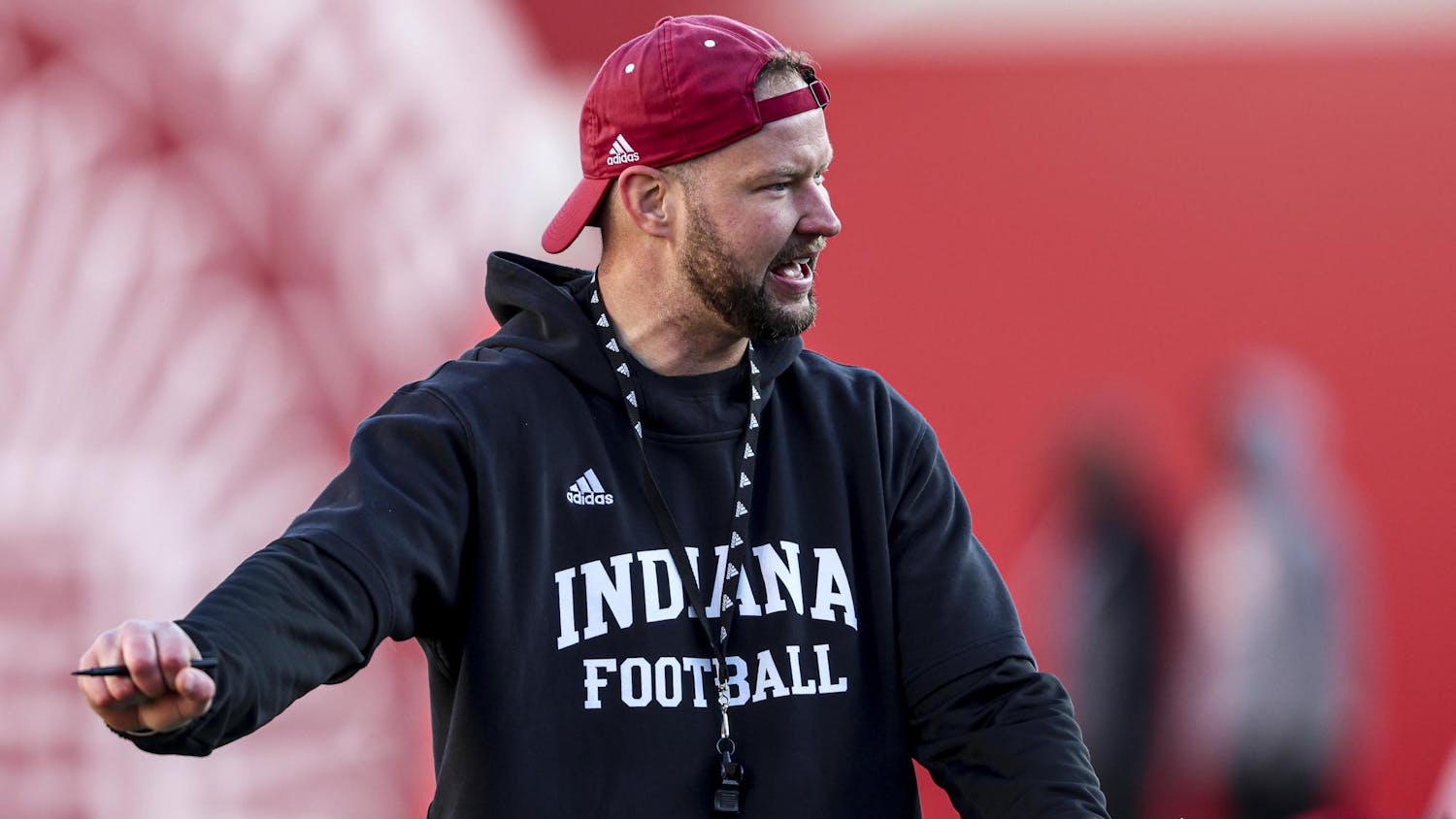“It’s lovely to be in Indiana in February,” Shields said. “I really appreciate the generosity.”
The artist talk, part of the McKinney Visiting Artist Series, covered a less-highlighted period in art: the proliferation of wood type, the precursor to metal and digital typography, as it pertained to posters and signs in the late 19th and early 20th centuries.
“I do this talk to sort of show that a lot happened in the 20th and the start of the 19th centuries,” Shields said. He added that he also wanted to show a commercial model that allowed for great things to happen.
Shields, who was introduced by Associate Professor Paul Brown, has many commendations besides just being an artist himself.
Brown said in his introduction that Shields is currently acting as ?associate professor and chair of the Department of Graphic Design at Virginia Commonwealth University. Before that, he was an associate professor of design at the University of Texas, where he was also a design custodian for the Rob Roy Kelly American Wood Type Collection.
“I’m not a historian by any measure,” Shields said. “I’m a designer who asked pesky questions.”
At his talk, Shields incorporated both historical background and more contemporary references to engage the audience, which was mainly students from the School of Fine Arts.
“Let’s start with a visual metaphor,” Shields said. Once he pulled up a BuzzFeed-style collection of types, he added, “I’m pandering to you kids. I live in your world now.”
From there, Shields moved into the historical background of typefaces and how artists of that type were able to communicate with their audiences in ?the 1800s.
“The way that messages were conveyed were through newspapers, which were intimate, or broadsheet street signs, all made through wood type,” ?Shields said.
Shields took the audience briefly through a timeline of wood type at the height of use, before metal type and neon signage became the norm in the 1930s.
“It is important to understand it as a mode of production and why it is ?important,” Shields said.
The second part of the talk included a brief tutorial of the methodology behind utilizing wood type back at its height. Shields explained all aspects of the art form, including a simple explanation for the more abstract devices such as the router pantograph.
“It is a parallelogram that is anchored and basically two different parts of the template move,” Shields said. “It’s a great tool for mapping because you could basically trace maps, an ?early Xerox machine.”
Shields also used the talk as a way to debunk some of the common misconceptions surrounding typeface origins, specifically as it pertains to one of the fathers of modern typeface.
“We think of (Adrian) Frutiger’s universe system as having erupted from his own head,” Shields said. “This is a modernist lie, in fact wood type had beat him to the punch.”
The final portion of the talk dealt with the people involved in wood type through the ages, which is what Shields said he focused on during his time ?in Texas.
“All of what I told you was a lie,” Shields said. “All the facts are correct but it’s told in a way that’s not true at all. I gave you a particular arc that just gave you a ?triumphant story.”
Shields’ talk ended as it began, with humor and a wrap-up of different type faces he has found to be the most appealing.
“This is the type porn section, where we look at sexy types in a specimen book,” Shields said.
The next artist visiting with the McKinney series will be Carrie Moyer on ?Feb. 27.





